(Bologne circa 1530/35 - 1570 Parma)
A fantasy head composed of three bearded faces
Pen and ink on paper
7 x 7 cm
Provenance:
Private collection, UK;
Private collection, France.
We know very little about Girolamo Mirola, and one of the few certainties about him is his very close proximity to that great painter who was a kind of his alter ego, the Parma-born Jacopo Zanguidi, known as Bertoja. Two artists mentioned as epigones of Parmigianino and artists with distinct identities, authors of valuable works, capable of speaking an international language, flourished in an era marked by prolific, changing and numerous exchanges between northern and central Italy and between France and Italy, especially after Primaticcio’s call to Fontainebleau in 1532. Mirola and Bertoja were both fascinated by the anti classical elegance of Parmigianino.
Mirola is associated with the Maniera or Mannerist style, which emerged in Italy during the late Renaissance. His work is somewhat obscure compared to his more famous contemporaries, but he made important contributions to painting, especially in Parma and Piacenza.
We are grateful to David Ekserdjian to help us in writing this catalogue entry. He points out that very few drawings believed to be by Mirola are securely connected with paintings connected with him: one is the Flying Putto in the Louvre, one is the Embracing Female Figures, Some Holding Musical Scores in the Metropolitan Museum of Art, New York (Attributed to Girolamo Mirola (Bologna documented, 1562–1570), pen and brown ink, brush and brown wash, partly highlighted with white gouache, over black chalk; squared in black chalk, 13,2 x 24,5 cm, N. 66.32, see below), while the third is in the Art Institute of Chicago, which Professor David Ekserdjian attributed to Mirola in the 2019 catalogue. De Grazia’s characterization of both Mirola and Bertoia rightly stresses the way their work combines Emilian and Roman influences.
Mirola’s works are often characterized by their Mannerist elegance. He embraced the elongated proportions, contorted poses, and complex compositions typical of the style. Mannerist art often valued grace and beauty over the balanced realism of the High Renaissance, and Mirola exemplified this through his decorative and sometimes extravagant designs. His draftsmanship is delicate, and his ornamentation reveals a taste for decorative details and grotesques, a genre that combines human and fantastical elements, often seen in architectural settings and fresco designs.
Girolamo Mirola’s drawings reflect his roots in the Mannerist tradition, which dominated much of Italian art during the mid-16th century. Though Mirola is often overshadowed by bigger names like Parmigianino, his drawing style has several notable features that fit within the Mannerist aesthetic. Like many Mannerist artists, Mirola often elongated his figures. This was a conscious departure from the balanced proportions of the High Renaissance. His figures, especially in preparatory drawings for frescoes and ornamental works, tend to have exaggerated proportions. Our drawing shows the same bearded face seen from three different angles creating a single fantastical figure surrounded by foliage scrolls, featuring flowing, curving lines with interwoven leaves.
Mannerist art often aimed to showcase the artist's technical skill through complex compositions and dynamic poses. Mirola’s drawings are known for their delicate and meticulous lines. His control over line weight helped him create detailed and decorative elements, crucial for his ornamental designs. The use of thin, sometimes feathery lines allowed him to build up textures and shadows gradually, rather than through strong, bold outlines.
Our drawing showcases Mirola's penchant for intricate ornamental designs, which often appeared in grotesques or allegorical themes. Grotesques combine human, animal, and vegetal elements into elaborate decorative motifs. His drawings often reflected his skill in producing these imaginative hybrids, which were highly popular in Renaissance decorative art, particularly in architectural settings.
These stylistic and thematic elements confirm the attribution of our drawing to Mirola, whose fanciful artistic personality perfectly matches. While Mirola’s use of light and shadow wasn’t as revolutionary as artists like Correggio, it was still a significant aspect of his work. His drawings often feature gentle gradations of light and shadow, especially in the modeling of the human face. He used hatching and cross-hatching techniques to build up volume and depth in this study of three bearded faces. Rather than heavy-handed contrasts, Mirola favored more subtle transitions between light and dark. This approach allowed him to achieve a certain grace in this grotesque, aligning with the Mannerist ideal of sophistication, with a soft, sculptural quality.
Many of Mirola’s drawings incorporate allegorical or mythological subjects, a typical feature of Mannerism. This grotesque is probably engaged in a scene that conveyed hidden meanings, possibly influenced by the intellectual climate of the time. Mannerist artists loved to weave complex iconography into their work, and Mirola’s designs reflected this intellectual playfulness. He frequently contributed to the decorative arts. His drawings often served as preparatory sketches for frescoes or architectural decorations, meaning they had to combine figural studies with ornamental elements. This dual purpose gave his drawings a certain versatility, as they needed to be both functional and beautiful.
Another Mirola's characteristic is the framing and structure: his drawings often show a concern for architectural space and framing. As he worked on frescoes and decorative schemes, his drawings would have taken into account how figures and ornamentation would interact with the surrounding architecture. His figures sometimes appear contained within clearly defined spaces, enhancing the decorative and formal qualities of his compositions. Our drawing shows a study of a head composed of three bearded faces surrounded by foliage on a squared background. While Mirola’s drawing style focused on ornamental beauty, he also adhered to the Renaissance understanding of perspective, though often with a Mannerist twist. His backgrounds could be complex, featuring distorted or exaggerated perspectives that added a sense of drama or tension to the compositions.
Mirola’s works are often praised for his grotesque decorations—elaborate designs that mix human figures, animals, and foliage in an imaginative and almost surreal manner. These grotesques were typically used to decorate architectural elements, and Mirola’s ability to produce detailed and ornate designs is evident in his surviving drawings. These grotesques served not only as decorative elements but also as an opportunity for the artist to showcase technical skill and creativity, which were highly prized in Mannerist aesthetics.
There are stylistic comparisons to be made between the present Study of three bearded faces and the drawings in the Louvre below:
Girolamo Mirola, A man’s mask, black chalk, pen and black and brown ink, brown wash, 25,3 x 20,6 cm, « Vasari mount », inscription in pen and brown ink « mirolo » , Collections: Huquier, Gabriel - Crozat, Pierre - Vasari, Giorgio - Mariette, Pierre-Jean - Saint-Morys, Charles-Paul-J.-B. de Bourgevin Vialart de (1743-1795) - Radel, Louis-François, INV 8399; and Girolamo Mirola, Study of a standing bearded man, pen and brown ink, beige wash, inscription in pen and brown ink lower left « mirolo » and numbering « 59 », on verso inscription in pen and brown ink, crossed out « Giulio Romano » and still visible « mirolo », 23,7 x 10,6 cm, Collections: Este, Alfonso III d' - Modène, collection des ducs de - Este, collection d' - Este, Ercole III d', duc de Modène, INV 10885.
Last example, in a different technique, but with a similar rendering of the curls of the hair: Girolamo Mirola, A flying putto, and study of the same figure, black chalk and metal point, and pen and brown ink, 36,5 x 22,6 cm, Collections: Jabach, Everhard - Cabinet du Roi, INV 26244, Louvre.
In essence, Mirola's drawings are a fascinating blend of Mannerist refinement, elegance, and ornamental skill, making him a distinctive figure in the 16th-century artistic landscape. His attention to detail and decorative flair set him apart, even if his name is not as well-known as some of his contemporaries.
In summary, our drawing responds to the fundamentals of Mirola's style: it shows a love for ornamentation, particularly grotesques and decorative motifs; it displays a delicate, controlled use of line, focusing on precision and detail.
Mirola frequently worked in collaboration with other artists of the time, Bertoja and Pellegrino Tibaldi. Though he is often overshadowed by better-known figures of the Mannerist movement, his role as a decorative artist is still recognized in studies of 16th-century Italian art. The stories of Bertoja and Mirola are, in short, quite similar. The attributive oscillations from one to the other, due to the complexity of the cultural and stylistic issues involved, have not found an exhaustive solution to date. It will therefore come as no surprise that Girolamo Mirola’s masterpiece, The Rapt of the Sabine Women in the Bologna Civic Museums, has in the past been attributed to Bertoja. Vasari in his Vite spoke only of Mirola: « in Parma is today, next to the lord duke Ottavio Farnese, a painter called Miruolo, I believe, of Romagna nation, who, besides some works done in Rome, has painted in fresco many stories in a little palace the said lord duke had made in the castle of Parma ». Oblivion began precisely after the death of Ottavio Farnese, second duke of Parma and Piacenza, the greatest patron of Bertoja and Mirola, who were employed by him together in that marvelous building site that is the Palazzo del Giardino in Parma.
He was likely born in Bologne and is believed to have trained with some of the prominent artists of the Emilian school, which combined the influences of the High Renaissance (such as the work of Raphael) with early Mannerism.
Mirola contributed to both religious and decorative works. He worked on frescoes and altarpieces, often in collaboration with other artists. His most famous works include contributions to frescoes in churches and palaces in Parma and Piacenza.
One of his most notable pieces was the decoration of the Rocca di Fontanellato, a castle near Parma. Here, Mirola worked on frescoes in collaboration with other artists.
His legacy lies mainly in his drawings and ornamental works, which showcase his skill in handling fine details, as well as his contributions to the development of the Mannerist style in Northern Italy. His studies of grotesques, allegorical themes, and complex, multi-figure compositions were highly regarded.
Girolamo Mirola likely died around 1570 in Parma. Little is known about his later life, and many of his works remain difficult to trace.
We are grateful to Professor Elisabetta Fadda, who confirmed the attribution of the work on basis of photographs.









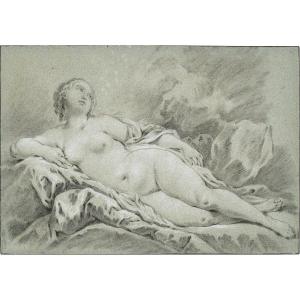


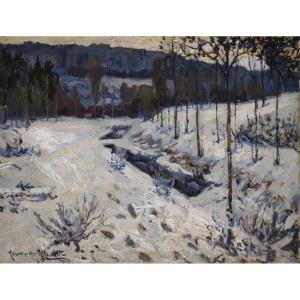





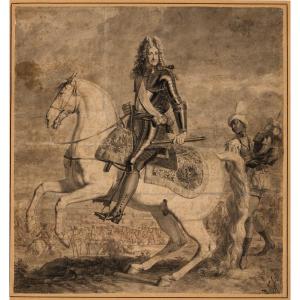
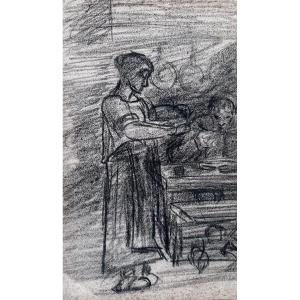

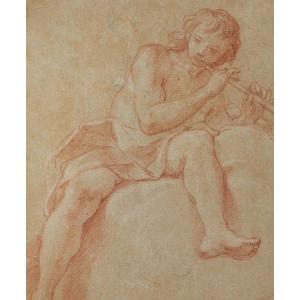


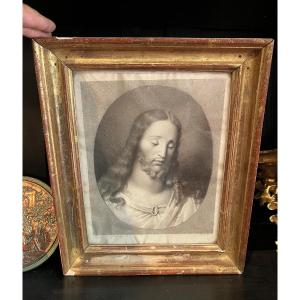





 Le Magazine de PROANTIC
Le Magazine de PROANTIC TRÉSORS Magazine
TRÉSORS Magazine Rivista Artiquariato
Rivista Artiquariato